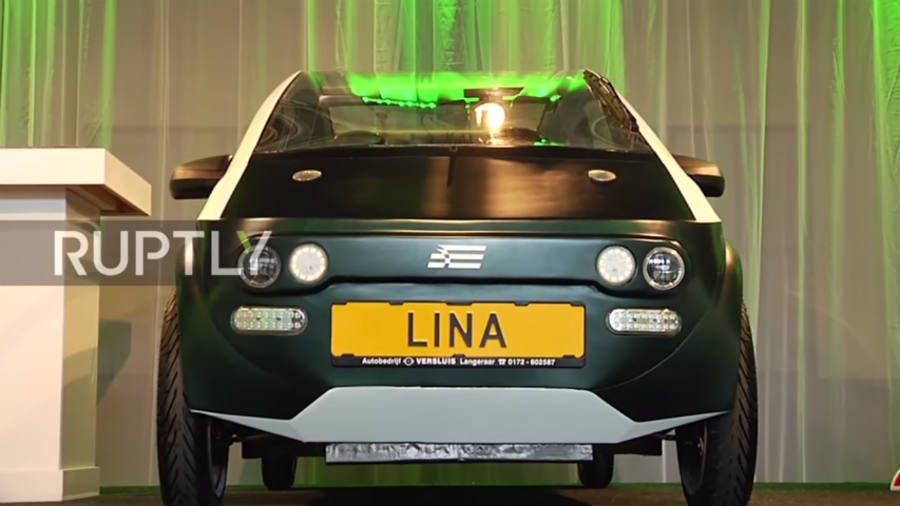Students from the Eindhoven University of Technology in the Netherlands unveiled LINA, the world’s first car made out of biodegradable materials back in May. Now, the Netherlands Vehicle Authority says it will be ready to roll later this month.
The TU/ecomotive team took Lina to the Shell Eco-marathon in London after its reveal, and now they are back in their homeland on a national tour before making some final adjustments to the car needed to make it more suitable for driving.
Experts say bio-composite vehicles could become a thing in the foreseeable future if automakers find a way to recycle some of the non-biodegradable parts of current cars and integrate them to the green alternatives.
LINA is light, easy-to-drive, and made for the city
TU/ecomotive and advisor professors made LINA mostly out of bio-composite materials, out of which flax and sugar beet proved to be essential to build the structure.
Flax, a long-stemmed plant with blue flowers, grows mostly in northern regions of both Europe and North America. It is easily obtainable, and its compressed fibers make for a strong cover and reinforcement for the core materials.
Sugar beets are precisely that base material, and they are processed to manufacture bio-plastic or PLA that is then arranged into honeycomb-like structures and panels as needed. Flax covers the panels to avoid rain and weather to degrade them.
Aside from being entirely recyclable, these materials also make LINA very lightweight. At just 300 kg, the vehicle is very energy-efficient since it doesn’t have to consume as much power as other heavier cars.
With an array of three battery packs, LINA has a range of 100 km on a single charge, and TU/ecomotive students say that drivers would need only to swap batteries to continue going. It would not take longer than pumping gas at a station.
LINA was designed with friendly city driving in mind, so it can only reach speeds of 80 km/h or 55 mph. However, it is spacious enough to sit four people, but the prototype version of the car doesn’t have covered interior panels or air conditioning, and the windows cannot roll down.
The Netherlands Vehicle Authority gave the Eindhoven University of Technology team the all-clear last month; with the condition that they met some additional vehicular standards to drive LINA safely on national roads.
All the electrical parts and wiring work just fine, but one major fault is the fact that the prototype presents some limited reverse gear capabilities, and steering is not quite as optimal as it could be.
Specialists like Prof. Maarten Steinbuch of ETU say projects like LINA could be feasible to the auto industry if they somehow married metal and biodegradable materials for long-term sustainability and profitability.
Source: BBC



